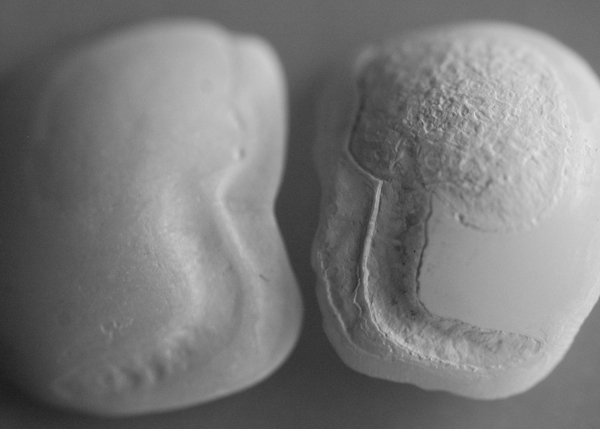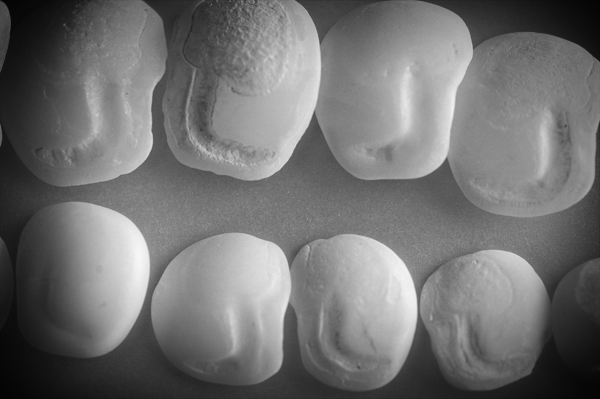I was scouring the beach for sea glass when two women walked by.
“Not many lucky stones today,” the taller one said to me.
Hmmm. What are lucky stones, I wondered? The women were long gone before I could ask them.
When I got home I headed online to do some research. And I found bones.
The lucky stones I’m sure the two women were referring to that day over a year ago are otoliths, or ear bones from sheepshead fish. They are found along the shores of Lake Erie.
Apparently, indigenous people used them as amulets and fishermen put them in their pockets for good luck.
Whether you are superstitious or not, there’s no denying that lucky stones or “ear stones” truly are remarkable. In fact there are scientists who devote their entire working lives to studying them.
Otoliths provide a wealth of scientific data. In fact, they are referred to as the “black box” or ‘flight recorder” of a fish. Not only does an otolith tell a fish’s age (each year is represented by a ring, just like a tree), but also very detailed information about the fish’s health, habitat and diet. As D. Graham Burnett writes in Cabinet Magazine: (do check out the rest of this excellent article on otoliths)
… about thirty years ago a curious geologist, tinkering with an otolith (it was a rock, after all), made the truly shocking discovery that those annual layers can be further resolved, microscopically, down to daily layers, layers that contain, in their chemical composition and size, information about the temperature and the salinity of the water through which the fish moved, the food that it ate, and various environmental contaminants it encountered. The result is a stratigraphy unprecedented in the organic world: the diligent student can peruse the otolith of a long-lived deep sea fish, and reconstruct not merely its age, but (and I am barely exaggerating) what it had for breakfast on 6 March 1964, or roughly where it was on the occasion of a particular nuclear test.
Interestingly, each stone has either an “L” shape or a “J” (which stands for “Love and Joy”, according to some collectors.) The “L” shaped bones are from the right side of the fish, while the “J” is from the left side.
Some collectors make jewelry out of Lucky Stones. Alison over at Lucky Stone Jewelry is a cancer survivor – and collecting and making jewelry from lucky stones is part of the healing process for her. Check out her story and her wonderful creations here.
I had a nice collection of lucky stones – until this afternoon, when my collection blew into the wooden cracks of my front porch while I was trying to photograph them. (The photos above were snapped before the wind took them.) I have two left.
Yet another excuse to hit the beach this weekend.

